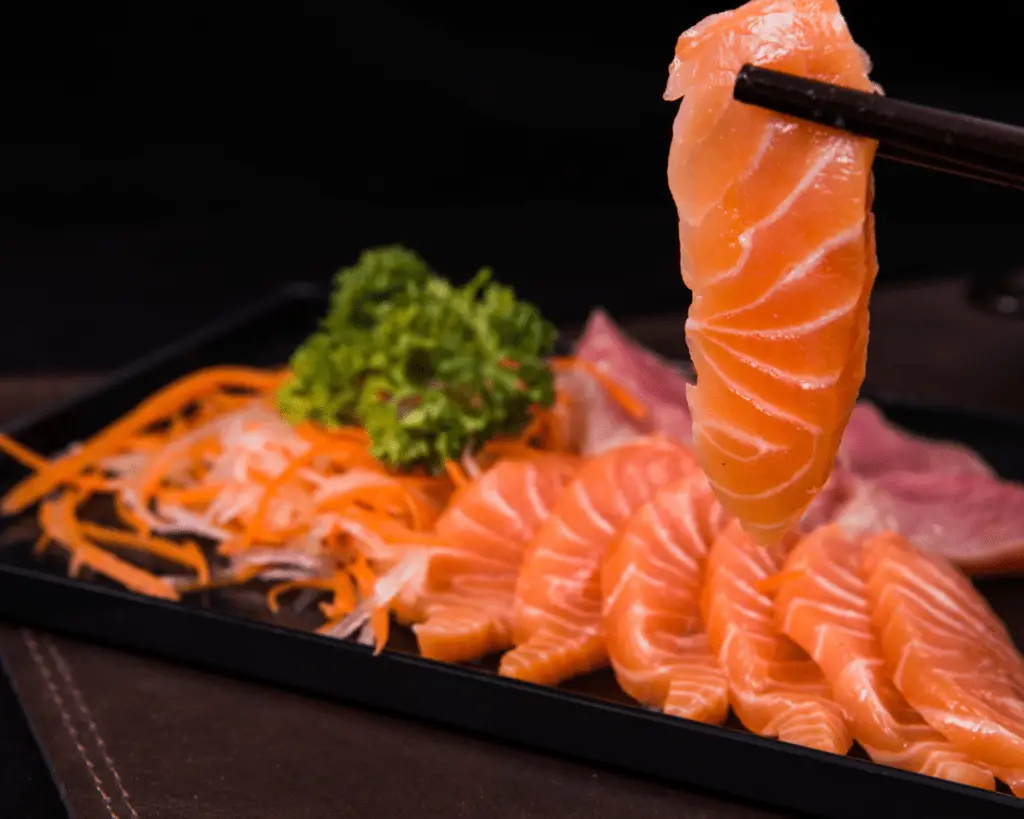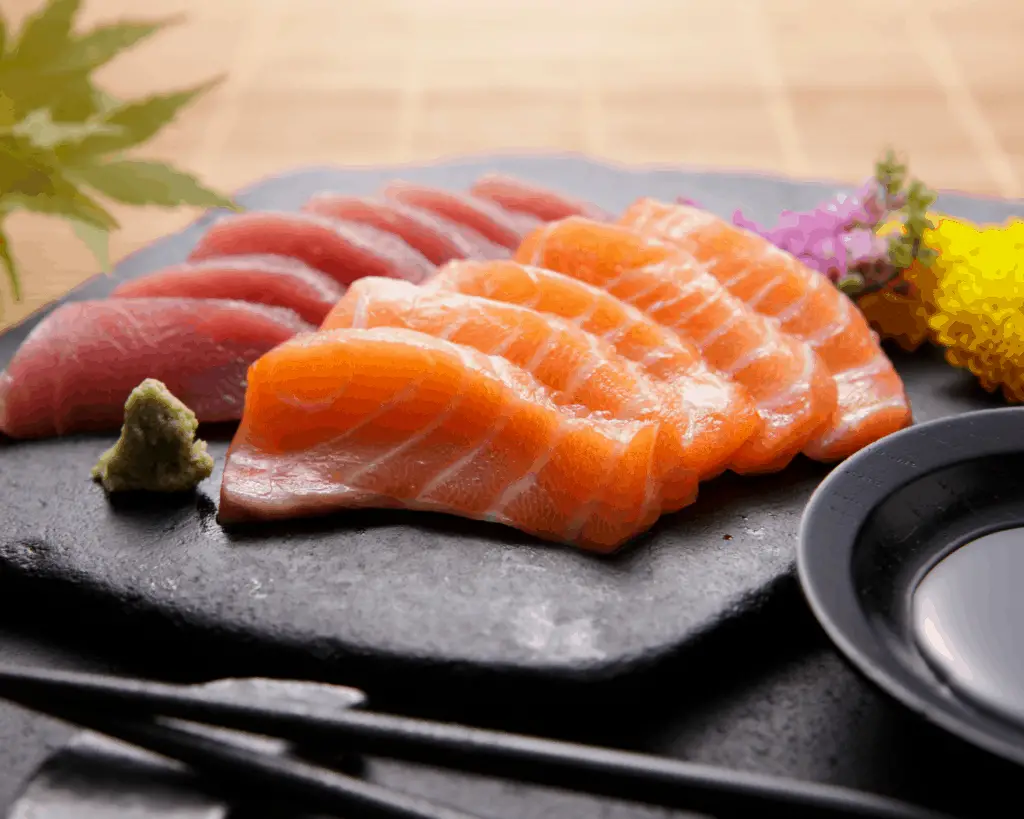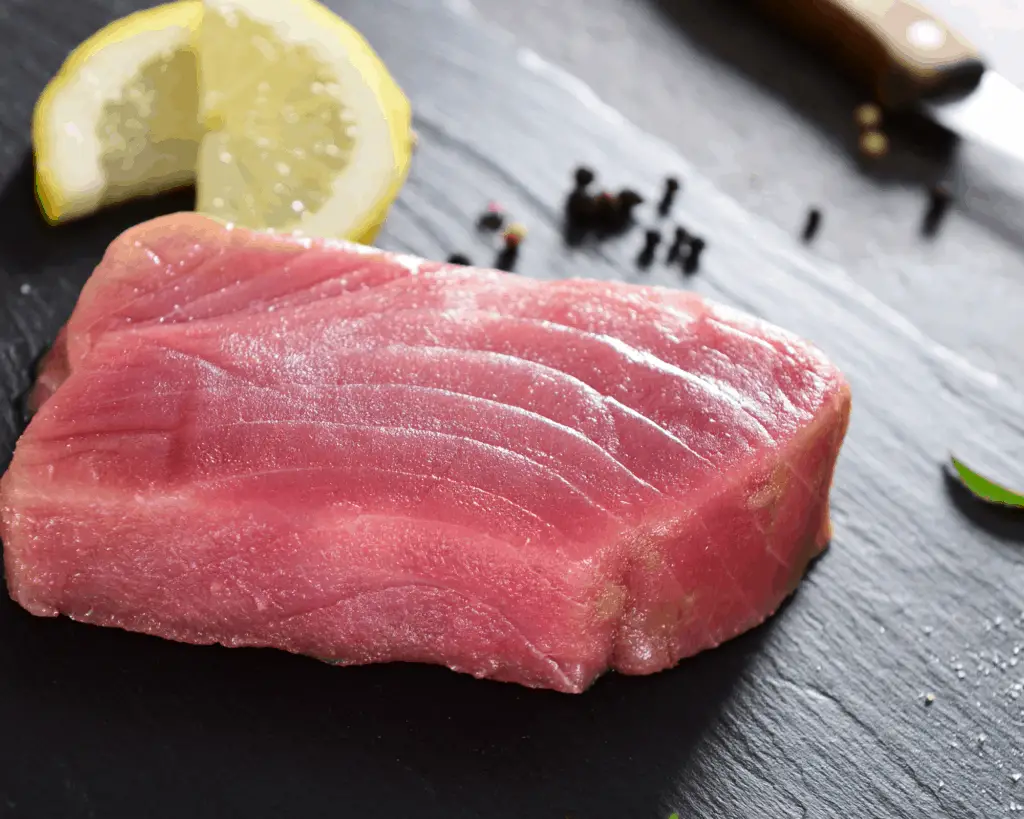Many people wonder, is sashimi tuna? The answer is a little more complex than you might think as there is general confusion. In this post, we will describe what sashimi is and how little it is directly related to tuna.
Sashimi is not tuna. But sashimi can be made from different types of fish such as tuna. However, it is important to emphasize that sashimi involves much more than just serving raw fish.


Sashimi quality fish is fish that is caught with a single line rather than a net as is done with other fish used for other dishes. In addition, sashimi fish are killed and frozen immediately after landing.
This helps to keep it fresh and prevents lactic acid build-up which minimizes degradation of the fish.
Is Sashimi Tuna?
The word sashimi literally means a pierced body. But in reality, is sashimi tuna? Well, sashimi is a delicacy of thinly sliced raw fish served with soy sauce. More than tuna or other specific fish, sashimi is about the freshness, appearance, presentation, taste, and quality of a fish to be eaten raw.
Some of the aspects to consider for sashimi are the species, age, and sexual maturity of the fish. These factors are important because they influence the fat content of the fish. Tuna with higher fat content will be more optimal and fetch better prices in the sashimi market.
Sashimi quality tuna is determined by the conditions under which it has been caught, preserved, treated and transported. Both biological and non-biological factors must be considered equally in determining the sashimi quality of tuna or any other fish desired for sashimi.
Biological factors refer to the species, age, and size of the tuna. These determine the fat content of the fish and depend on the nature of the fish itself.
Non-biological factors refer to the method of fishing, handling, and cooling techniques after catching the tuna and are the responsibility of the harvester or fisherman.

There are different ways to package and consume fresh tuna. But to serve sashimi-grade tuna, certain conditions are needed to make it safe to eat raw. Ideally, after being caught, the temperature should be reduced as soon as possible to 32ºF and this temperature should be maintained while it is stored, unloaded, and packed for transport.
In ancient times, people could access fresh fish, cut it into slices and eat them raw. This was possible thanks to the oceans surrounding Japan.
The necessary condition for enjoying good sashimi is that the fish must be fresh. In addition to the indisputable taste of fresh tuna, it is essential for hygienic and health reasons.
Most people are afraid to eat raw fish at home. So they prefer to eat it in a restaurant that they consider an expert in serving sashimi. Besides, it is almost impossible to be sure if a fish is really fresh or the seller is trying to deceive you to sell his product.
Some fishmongers display the fish in a secluded area that they advertise as “sashimi grade” tuna. This causes great confusion because people often think that other fish are not suitable for sashimi consumption. People may even mistake sashimi as a type of tuna, which is a mistake.
Can You Eat Raw Tuna? Benefits and Dangers

It is common in sushi restaurants for tuna to be served raw or barely cooked. As you know, tuna is a very nutritious food with large amounts of health benefits. However, you may have doubts about whether you should eat it completely raw or not.
Tuna is a saltwater fish that is consumed all over the world. It is found in different presentations. Canned, packaged, or cut into medallions and contain a high level of protein and very little fat. It contains omega-3 which provides great benefits to the heart and brain.
Tuna also contains iron, potassium, and B vitamins. All the nutrients contained in this fish help the body prevent heart disease among other chronic diseases.
Just as tuna has important health benefits, it also has some risks of consuming it raw. Raw tuna may contain parasites that can cause illness. The risk of consuming tuna with parasites is greatly related to where it was caught.
It is not a great risk since the parasites usually die after cooking or freezing the tuna. Tuna is usually found frozen in the market. This means that the risk of eating raw tuna is very low compared to other types of meat such as chicken.